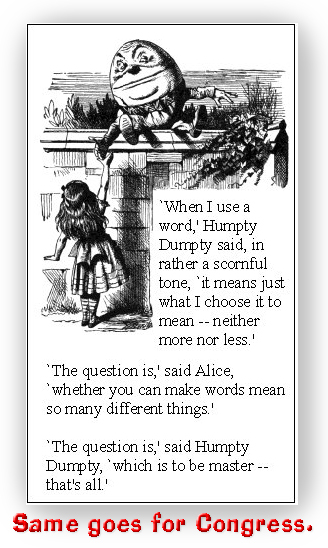We post news and comment on federal criminal justice issues, focused primarily on trial and post-conviction matters, legislative initiatives, and sentencing issues.

SUPREMES HEAR ORAL ARGUMENT ON DRUG SENTENCING “SAFETY VALVE”
The Supreme Court opened its nine-month term last Monday hearing oral argument on the meaning of a First Step Act amendment to 18 USC § 3553(f), a subsection known as the “safety valve.”
Under the “safety valve” provision, judges could disregard mandatory minimum sentences for people convicted of certain nonviolent drug offenses who had limited criminal history and met a few other conditions.
 At issue is how to interpret a part of the law that determines who is eligible for this provision, which could potentially lead to a shorter sentence. Three requirements under the provision involve prior criminal history, and the court is being asked to decide whether people no longer qualify if they meet one of these criteria — or if they must meet all three.
At issue is how to interpret a part of the law that determines who is eligible for this provision, which could potentially lead to a shorter sentence. Three requirements under the provision involve prior criminal history, and the court is being asked to decide whether people no longer qualify if they meet one of these criteria — or if they must meet all three.
Mark Pulsifer pled guilty to one count of distributing 50 grams of methamphetamine and then sought application of the “safety valve.” To be eligible, a defendant cannot have “(A) more than 4 criminal history points… (B) a prior 3-point offense, as determined under the sentencing guidelines; and (C) a prior 2-point violent offense, as determined under the sentencing guidelines.”
At issue is whether “and” means “and.”
The government argues that “and” means “or,” so defendants are ineligible if they fail any of the three subparts. “It joins together three independently disqualifying conditions by distributing the phrase ‘does not have.’ That’s the only interpretation that avoids rendering the first subparagraph entirely redundant,” the Solicitor General’s attorney told the justices.
Pulsifer’s lawyer disagreed. “Letting the government get to ‘or’ when Congress said ‘and’ would encourage Congress to be sloppy with the most basic English words, leaving square corners far behind, and in the criminal context, where fairness matters most. The Court should hold Congress to what it wrote.”
 At oral argument, the justices spent most of their time parsing the grammar and conjunctions, trying to determine whether § 3553(f) uses the word “and” to join three eligibility criteria together or distributively across three independently disqualifying criteria. The government’s lawyer often appealed to a canon of construction rooted in “common sense,” a suggestion not that well received. “I don’t know that canon, but I guess it’s a good one,” Justice Neil Gorsuch quipped.
At oral argument, the justices spent most of their time parsing the grammar and conjunctions, trying to determine whether § 3553(f) uses the word “and” to join three eligibility criteria together or distributively across three independently disqualifying criteria. The government’s lawyer often appealed to a canon of construction rooted in “common sense,” a suggestion not that well received. “I don’t know that canon, but I guess it’s a good one,” Justice Neil Gorsuch quipped.
Pulsifer’s lawyer rejected it as well: “The government focuses a lot on common sense, but it’s common sense that if Congress wanted to say “or,” it would have said “or,” he contended. “It knew how to do that in other parts of this very sentence, of § 3553(f). The — Congress’s own drafting manual says to do so, and that would be the ordinary meaning — that would be the ordinary term to use in order to express the meaning that the government attributes to this statute.”
The court’s ruling may affect thousands of defendants with pending cases and those in federal prison. And how to read an ambiguous “and” may become important to a lot of zero-point people pretty soon, too.
 The Sentencing Commission’s retroactive zero-point amendment (USSG 4C1.1) goes into effect in a month. Section 4C1.1(a)(1) directs that an eligible defendant is one who “did not receive an adjustment under 3B1.1 (Aggravating Role) and was not engaged in a continuing criminal enterprise, as defined in 21 USC § 848.” Does this mean that no one with a 3B1.1 enhancement or who was convicted of a 21 USC § 848 continuing criminal enterprise is eligible? Or does it mean that you must have both a 21 USC § 848 conviction and a § 3B1.1 enhancement to be disqualified?
The Sentencing Commission’s retroactive zero-point amendment (USSG 4C1.1) goes into effect in a month. Section 4C1.1(a)(1) directs that an eligible defendant is one who “did not receive an adjustment under 3B1.1 (Aggravating Role) and was not engaged in a continuing criminal enterprise, as defined in 21 USC § 848.” Does this mean that no one with a 3B1.1 enhancement or who was convicted of a 21 USC § 848 continuing criminal enterprise is eligible? Or does it mean that you must have both a 21 USC § 848 conviction and a § 3B1.1 enhancement to be disqualified?
Ohio State University law professor Doug Berman wrote in his Sentencing Law and Policy blog that he suspected Pulsifer
will end up with a 5-4 vote in favor of the government’s proposed statutory interpretation that would restrict the reach of the First Step Act’s expansion of the statutory safety valve exception to drug mandatory minimum sentencing terms. But I would not entirely discount the possibility that the four Justices who seemed most favorable toward the defendant’s reading, particularly Justices Gorsuch and Jackson, might find a way to peel off a key fifth vote (especially since the Chief was pretty quiet throughout and Justice Kagan hinted toward the end that she might be less sure than she seemed at the outset).
Berman anticipates a decision in winter 2024, although he offers the chance that “this one might take quite a while if lots of Justices decide to write on lots of broader statutory interpretation topics (like the reach of the rule of lenity and/or the use of legislative history and/or corpus linguistics).”
New York Times, On First Day of New Term, Supreme Court Hears Debate Over First Step Act (October 2, 2023)
The Hill, Supreme Court opens term with case on prison terms for drug offenders (October 2, 2023)
Slate: The Supreme Court’s Oddest Pairing Comes Out Swinging on Behalf of Criminal Defendants (October 2, 2023)
Transcript of Oral Argument, Pulsifer v. United States, Case No. 22-340 (October 2, 2023)
Sentencing Law and Policy, Rounding up some accounts of lengthy SCOTUS oral argument in Pulsifer safety valve case (October 3, 2023)
– Thomas L. Root

